Eleocharis uniglumis
Slender Spike-rush
Use the linked "⇑" up-arrows with each topic header to get back here, or use the 'Top' button which appears in the lower-right corner when you're further down the page.
Links to all pages are at the bottom of the page.
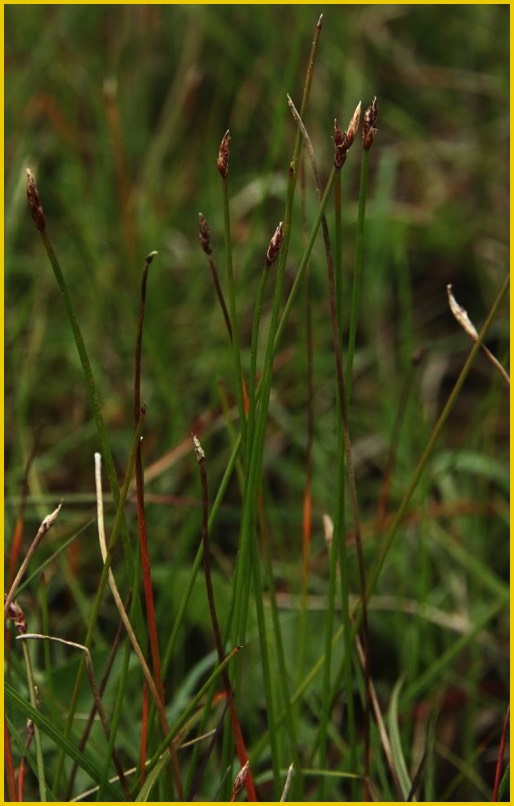
Eleocharis uniglumis, inland form, Tarn Sike (Cumbria), July 2011
➢ variable, often rather slender plant, creeping, and can make extensive, although generally rather open, patches
➢ narrow and often quite pointed spikelet
➢ lowest glume encloses base of spikelet (like multicaulis and quinqueflora, but not elongated as in quinqueflora)
➢ ripe nut with style-base strongly swollen (much like palustris)
➢ largely coastal in saltmarshes, etc.; much sparser inland, mires of various types, normally with some mineral influence
Growth & size ⇑
➢ stems very variable in height; often 15-30 cm but can be up to 50 cm or more in height, often rather dark green and shiny; red/purple-based or not
➢ stems typically narrower than the ‘big two’ species (i.e. austriaca and palustris): 0.8-1.5 mm across, circular in section
➢ sheath apex +/- transversely truncate
➢ growth: patch-forming, but small tufts develop at the nodes of the creeping rhizomes

typical red-based stems (scale is 5 cm)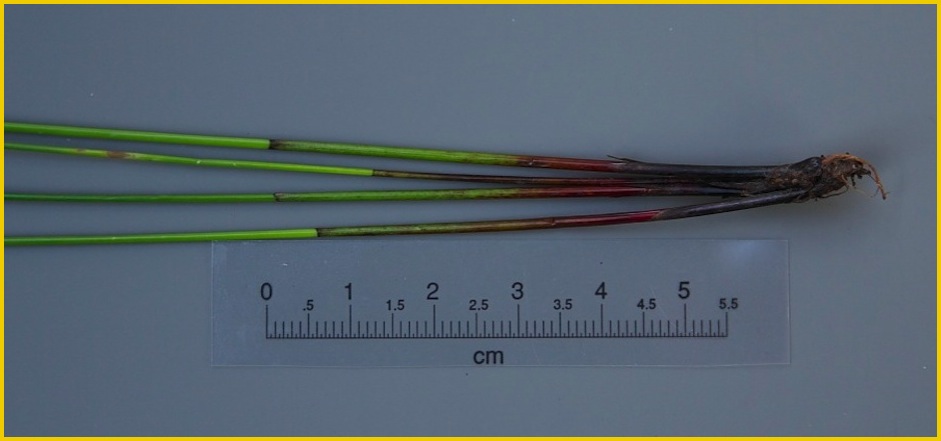
sheath-apex transversely truncate
Spikelets ⇑
➢ mostly slender and cigar-shaped, can be more oval-lanceolate, sometimes asymmetric
➢ lowest glume +/- fully encloses spikelet, mostly less than a fifth the length of the spikelet.
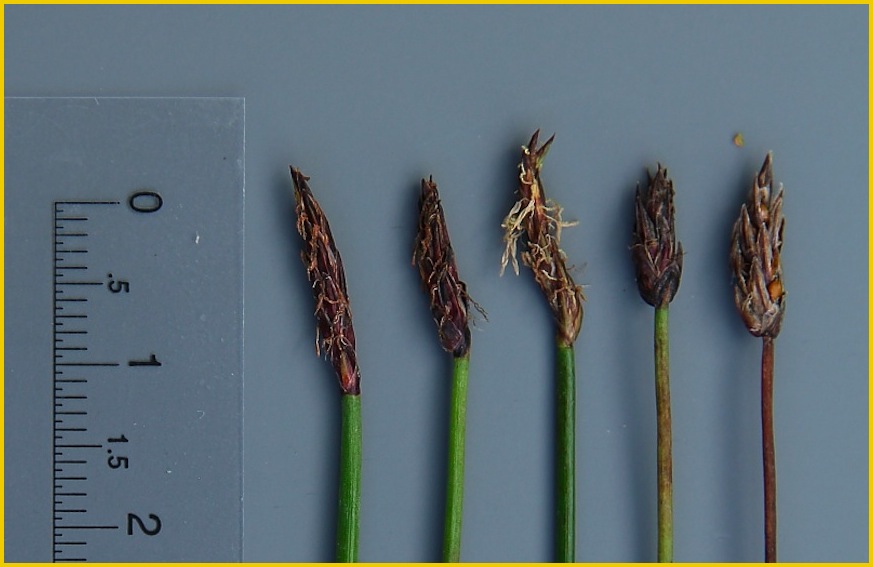
spikelets
Flowers ⇑
➢ stigma 2-forked (as in austriaca and palustris)
➢ perianth bristles variable in both number and size – usually shorter than nut
Nuts
➢ style-base (stylopodium) is swollen, broad, and with a clear ‘neck’ – a constriction – at its junction with the nut (much like palustris or even larger in proportion to the nut)
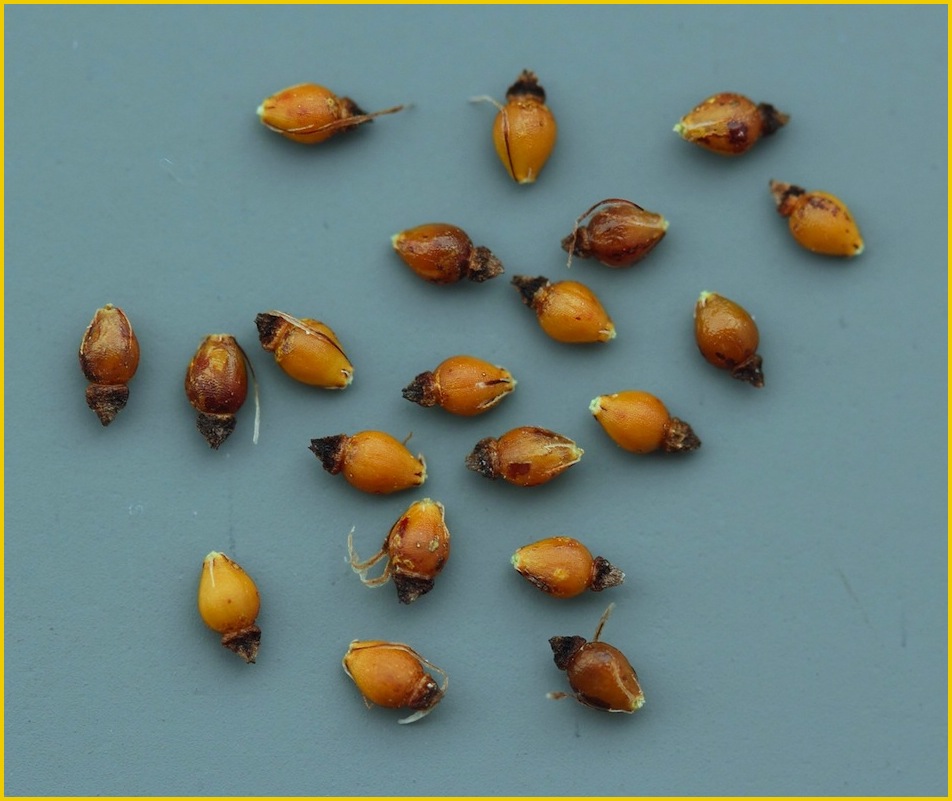
ripe nuts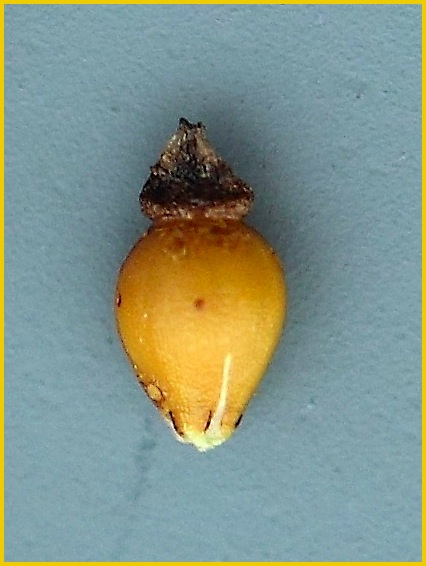
Stem section ⇑
➢ much as palustris, although layers of green tissue less deep and approaching austriaca. (Section was made from dried material, hence rather ‘colourless’; damaged in part, but clear enough.) Close-up shows abundant fibre-bundles.
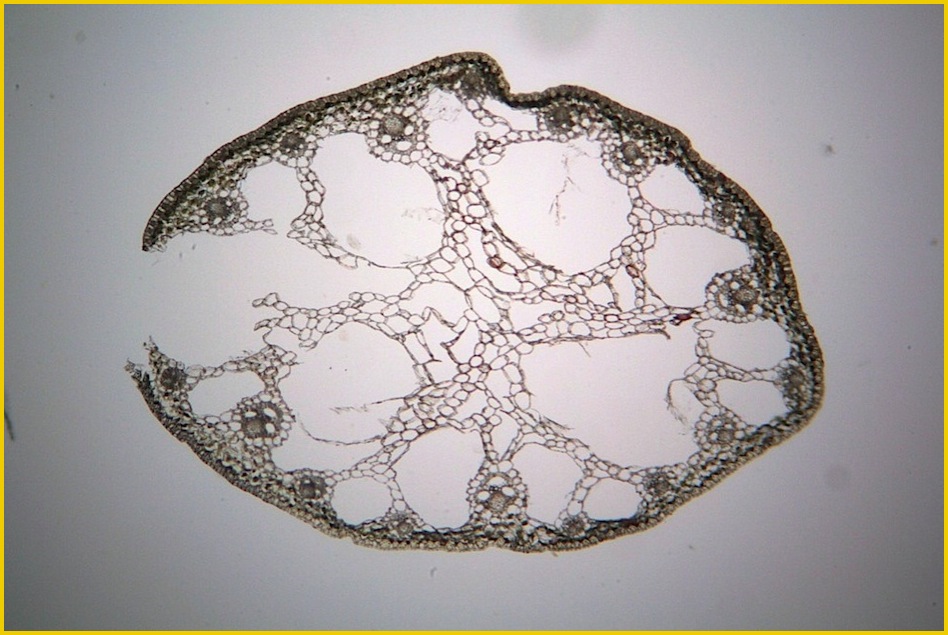
stem section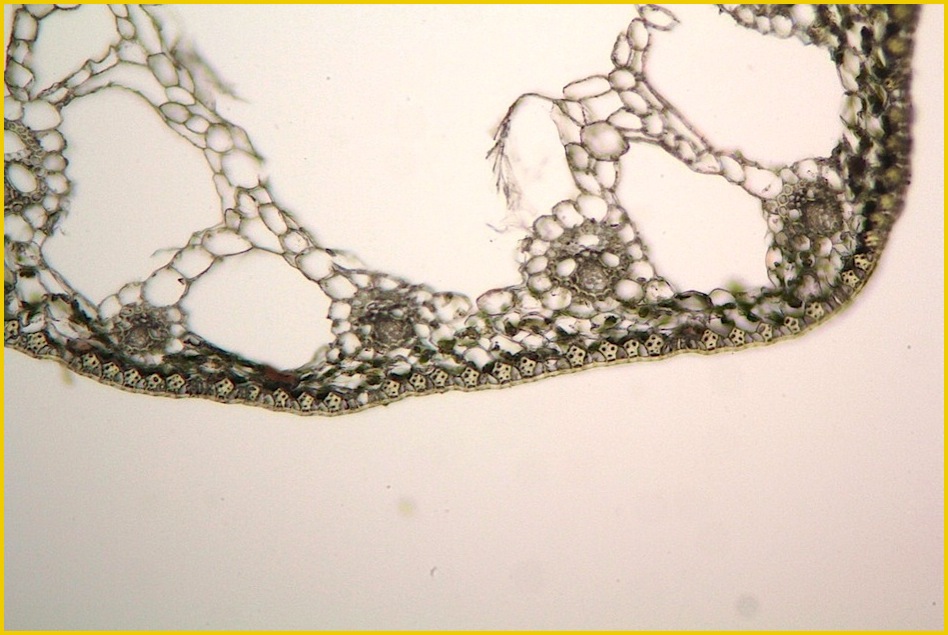
stem section closer: abundant fibre-bundles (pentagonal structures around periphery)
Epidermis ⇑
➢ most close to palustris, with abundant fibre-bundles, and narrow sections of ‘ordinary’ cells, with the rows carrying stomata mostly three cells wide. (See page ⇒ID:palustris/austriaca for wider discussion of epidermal peels. Includes technique to obtain peels.)
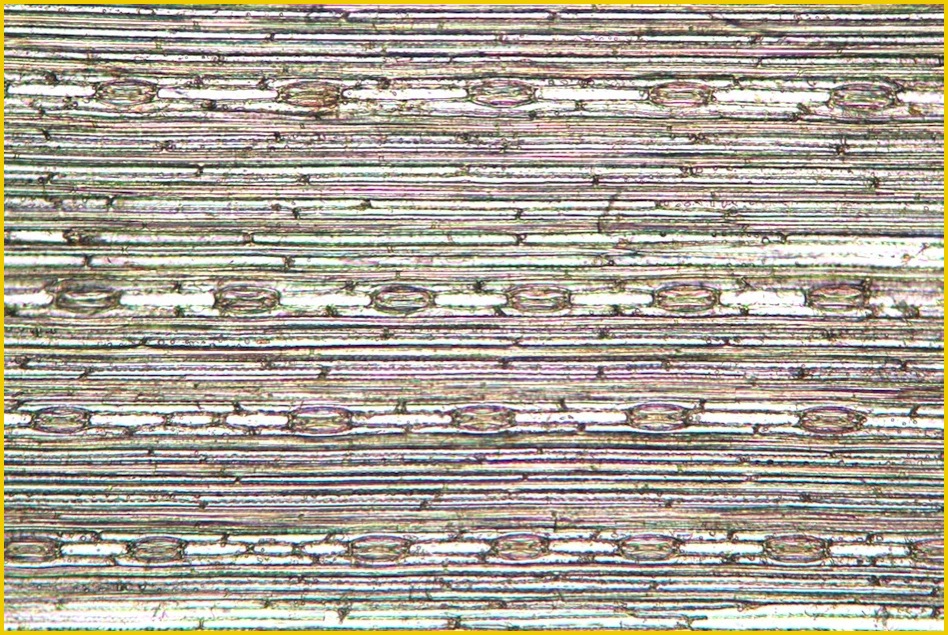
epidermal peel
Habitat ⇑
➢ saltmarshes in pools and in turf and other coastal habitats
➢ much less frequent inland in lowland fens, and in upland mires, especially where spring-fed and with at least a modicum of base.
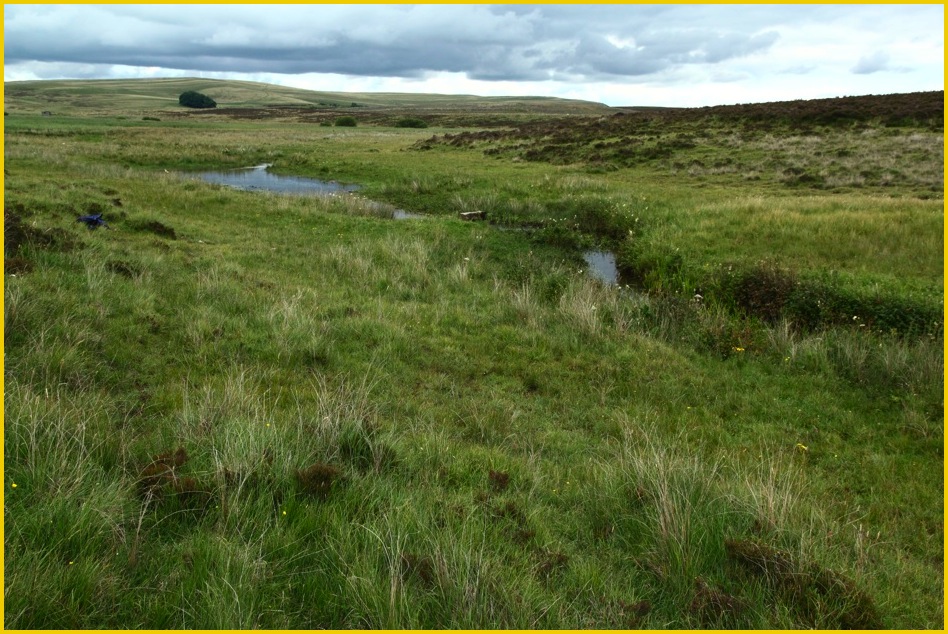
Tarn Sike (Cumbria): inland site of uniglumis;
with quinqueflora in open calcareous seepages by outlet stream from Sunbiggin Tarn
Frequency & range ⇑
➢ scattered throughout; rather more frequent in the west and north. See ⇒distribution map
Hybrid ⇑
➢ the putative hybrid between palustris and uniglumis is dealt with on the ⇒hybrid page.
Links to the other Eleocharis spike-rush pages (also accessible from the sidebar)
Species pages
Separation of similar pairs
Other information
